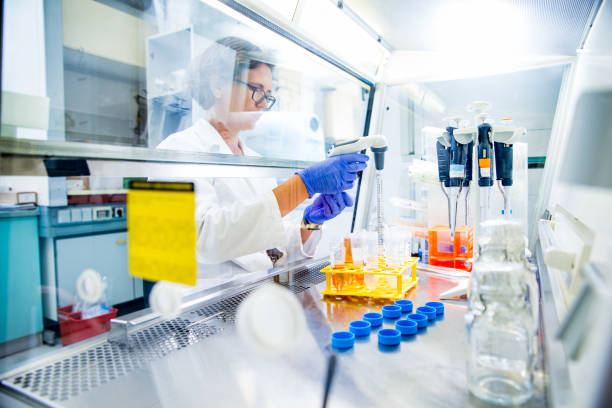Biological safety cabinets (BSCs) are critical pieces of laboratory equipment used to protect laboratory personnel, the environment, and the sample from potential contamination. They are an integral part of any laboratory’s safety and containment protocols and can provide an important layer of protection against potential hazards. This article will discuss the key features, benefits, and considerations for selecting the right biological safety cabinet for your laboratory.
Biological safety cabinets (BSCs) are critical pieces of laboratory equipment used to protect laboratory personnel, the environment, and the sample from potential contamination. They are an integral part of any laboratory’s safety and containment protocols and can provide an important layer of protection against potential hazards. This article will discuss the key features, benefits, and considerations for selecting the right biological safety cabinet for your laboratory.
BSCs come in a variety of designs and styles, depending on the specific needs of the laboratory. The most common types of BSCs include:
- Class I BSCs – These are the most basic type of BSC, and are designed to protect the user and the sample from potential contamination.
- Class II BSCs – These are more advanced than the Class I BSCs, and provide additional protection against airborne particles.
- Class III BSCs – These are the most advanced type of BSC, and provide the highest level of protection against potential contamination.
BSCs provide a number of benefits to laboratories. They provide a safe working environment for laboratory personnel, as well as protecting the sample from potential contamination. Additionally, BSCs can help to reduce the risk of cross-contamination between samples, as well as reducing the risk of potential hazards from airborne particles.
BSCs can also help to reduce the amount of time spent on cleaning and decontamination, as they can help to keep the laboratory environment clean and free from potential contaminants. Additionally, BSCs can help to reduce the risk of potential accidents and injuries, as they provide a barrier between the user and the sample.
When selecting a BSC, it is important to consider the size and type of the laboratory, as well as the type of sample that will be handled. It is also important to consider the environment in which the BSC will be used, as this can affect the type of BSC that is best suited for the laboratory.
Additionally, it is important to consider the cost of the BSC, as well as the features and benefits that it provides. It is also important to consider the maintenance requirements, as well as the safety features offered by the BSC, such as the HEPA filter, the ultraviolet light, and the carbon filter.
Biological safety cabinets are an important piece of laboratory equipment, and can provide an important layer of protection against potential hazards. They come in a variety of designs and styles, and can be tailored to the specific needs of the laboratory. BSCs provide a number of benefits, such as protecting the user and the sample from potential contamination, as well as reducing the risk of cross-contamination and potential accidents and injuries. When selecting a BSC, it is important to consider the size and type of the laboratory, the type of sample that will be handled, the environment in which the BSC will be used, the cost, as well as the features and benefits that it provides. Contact us to know more information on bsc safety cabinets.






